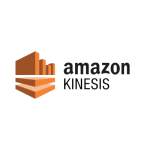About Vertica Analytics Platform
Extract, transform, and load data to Vertica. Ingest data from Vertica and load to other destinations.
About Amazon Kinesis
Amazon Kinesis is a powerful analytics solution that overcomes the batch-processing challenges of Hadoop — and similar solutions — which don't allow real-time precision in decision-making because they can't rapidly process high volumes of streaming data. With its ability to process hundreds of terabytes of streaming data per hour, Kinesis allows you to develop apps that rely on real-time data to fuel AI analytics, machine learning insights, and other applications. Kineses enables instant responses by eliminating the delay associated with batch processing.
Popular Use Cases
Bring all your Amazon Kinesis data to Amazon Redshift
Load your Amazon Kinesis data to Google BigQuery
ETL all your Amazon Kinesis data to Snowflake
Move your Amazon Kinesis data to MySQL
Vertica Analytics Platform's End Points
Vertica Massively Parallel Processing (MPP)
Through its MPP architecture, Vertica distributes requests across different nodes. This brings the benefit of virtually unlimited linear scalability.
Vertica Column-Oriented Storage
Veritica's column-oriented storage architecture provides faster query performance when managing access to sequential records. This advantage also has the adverse effect of slowing down normal transactional queries like updates, deletes, and single record retrieval.
Vertica Workload Management Automation
With its workload management features, Vertica allows you to automate server recovery, data replication, storage optimization, and query performance tuning.
Vertica Machine Learning Capabilities
Vertica includes a number of machine learning features in-database. These include 'categorization, fitting, and prediction,' which bypasses down-sampling and data movement for faster processing speed. There are also algorithms for logistic regression, linear regression, Naive Bayes classification, k-means clustering, vector machine regression/classification, random forest decision trees, and more.
Vertica In-Built Analytics Features
Through its SQL-based interface, Vertica provides developers with a number of in-built data analytics features such as event-based windowing/sessionization, time-series gap filling, event series joins, pattern matching, geospatial analysis, and statistical computation.
Vertica SQL-Based Interface
Vertica's SQL based interface makes the platform easy to use for the widest range of developers.
Vertica Shared-Nothing Architecture
Vertica's shared-nothing architecture is a strategy that lowers system contention among shared resources. This offers the benefit of slowly lowering system performance when there is a hardware failure.
Vertica High Compression Features
Vertica batches updates to the main store. It also saves columns of homogenous data types in the same place. This helps Vertica achieve high compression for greater processing speeds.
Vertica Kafka and Spark Integrations
Vertica features native integrations for a variety of large-volume data tools. For example, Vertica includes a native integration for Apache Spark, which is a general-purpose distributed data processing engine. It also includes an integration for Apache Kafka, which is a messaging system for large-volume stream processing, metrics collection/monitoring, website activity tracking, log aggregation, data ingestion, and real-time analytics.
Vertica Cloud Platform Compatibility
Vertica runs on a variety of cloud-based platforms including Google Cloud Platform, Microsoft Azure, Amazon Elastic Compute Cloud, and on-premises. It can also run natively using Hadoop Nodes.
Vertica Programming Interface Compatibility
Vertica is compatible with the most popular programming interfaces such as OLEDB, ADO.NET, ODBC, and JDBC.
Vertica Third-Party Tool Compatibility
A large number of data visualization, business intelligence, and ETL (extract, transform, load) tools offer integrations for Vertica Analytics Platform. For example, Integrate.io's ETL-as-a-service tool offers a native integration to connect with Vertica.
Amazon Kinesis's End Points
Amazon Kinesis Video Streams
Amazon Kineses Video Streams allow you to safely ingest streaming video data from millions of linked devices into AWS for machine learning, analytical, and other processing purposes. The platform then encrypts, stores, and indexes the video data so you can access video with simple APIs, play live video streams, and offer on-demand playback. When incorporating this technology with Amazon Rekognition Video, TensorFlow, ApacheMxNet, and OpenCV, Amazon Kineses Video Streams makes it possible to build video analytics and computer vision processes into your applications.
Amazon Kinesis Data Streams
By capturing, processing, and storing data streams, Amazon Kinesis offers a real-time data streaming solution to ingest large amounts of information from hundreds of thousands — even millions — of sources at the gigabytes-per-second scale. The massive scalability of this solution lets you capture and produce immediate analytics on data pertaining to financial transactions, database event streams, location tracking data, clickstreams, social media activity, and more. Since the availability of streaming data happens in milliseconds, the platform enables real-time analytics of this information for instant detection of anomalies, dynamic price adjustments, precise dashboard metrics, and more.
Amazon Kinesis Data Firehose
Amazon Kinesis Data Firehose provides a simple and durable way to pull your streaming data into data warehouses, data lakes, and analytics solutions. Due to its compatibility with Splunk, Amazon Redshift, Amazon S3, and Amazon Elasticsearch Service, Kinesis Data Firehose empowers real-time data analytics for the dashboarding and BI tools you've come to trust. Fully managed and automatically scaling, you can use Firehose to encrypt, batch, transform, and compress your information before ingestion to boost security and save on disk space.
Amazon Kinesis Data Analytics
Amazon Kinesis Data Analytics helps users without programming knowledge to analyze data streams with SQL or Java. For team members who know SQL, an SQL editor and templates are available for creating streaming applications or querying streaming data. Meanwhile, those with Java knowledge can develop more nuanced streaming applications that perform real-time data transformations and analytical processes.








